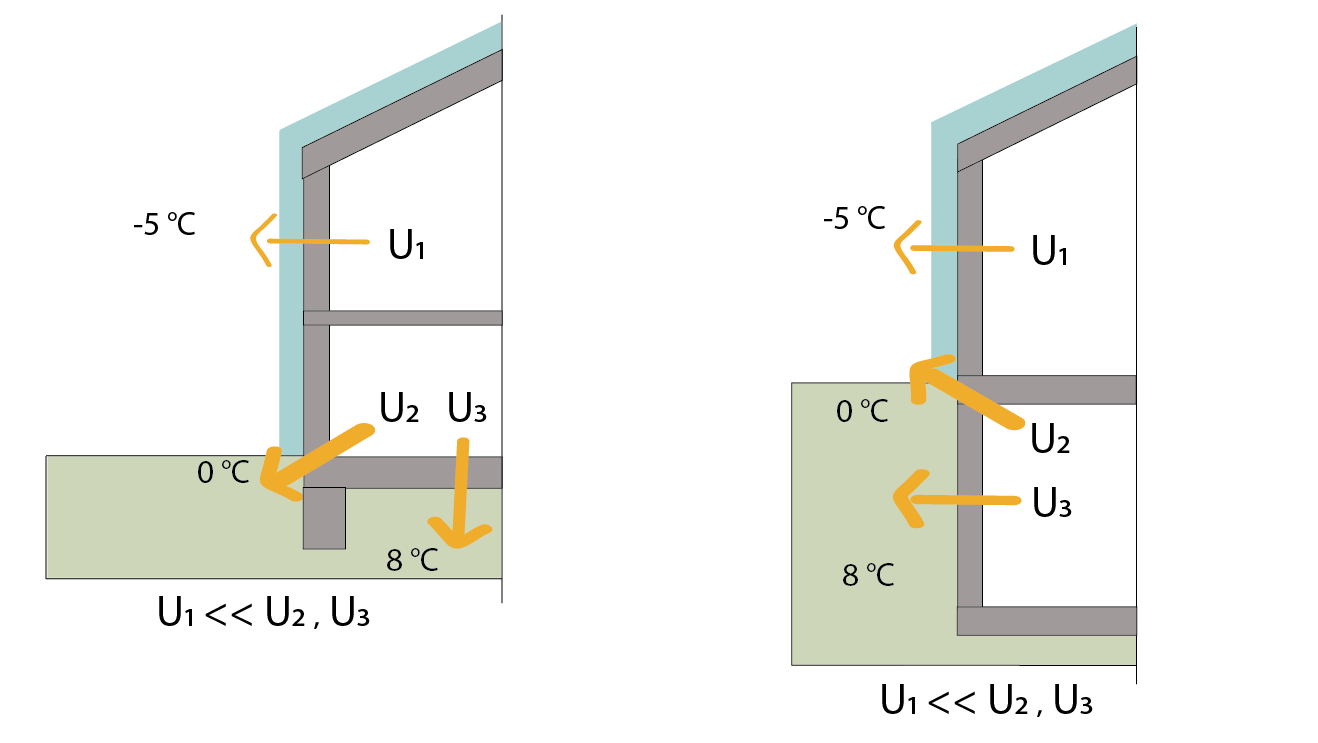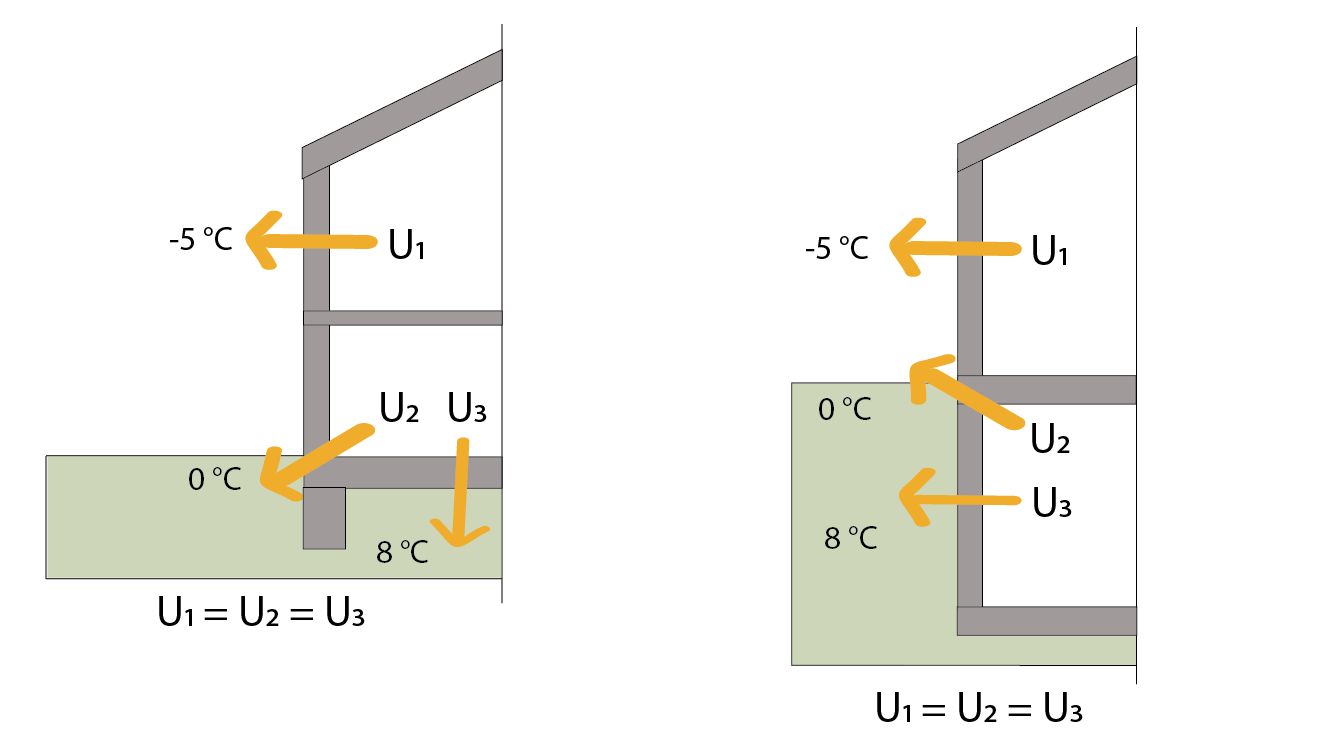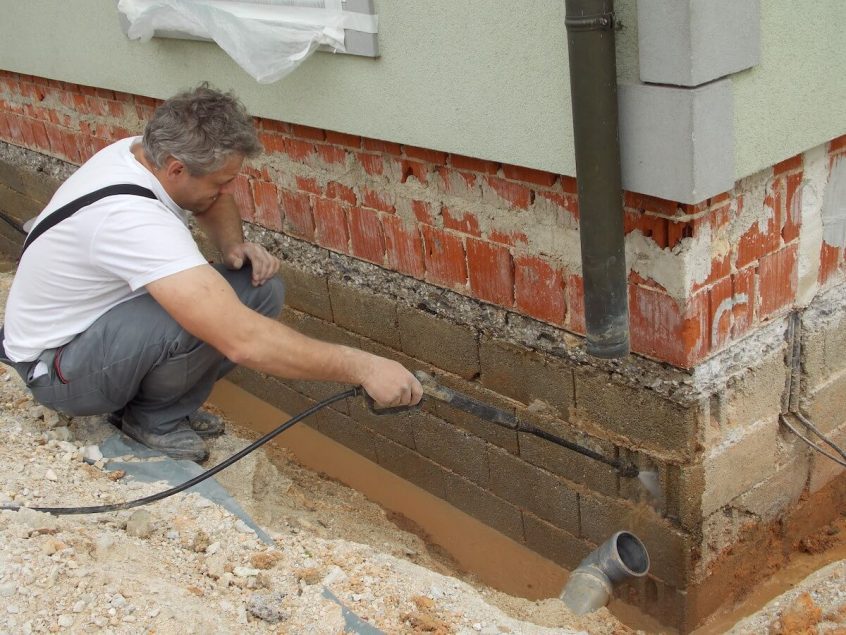While it is not easy to renovate old buildings and achieve the same standards of energy efficiency and indoor living as in new construction, the biggest challenge of them all is fixing the below-grade area. Probably this is the reason why people often just give up and do not even try. Unfortunately, not doing things by the book may quickly lead to new and unexpected problems.
New Problems?
Having spent a lot of money on the renovation, the last thing we need is a new problem – especially if we did not have before the renovation. We are talking about condensate and mold formation at the foot of ground floor walls or at the top of the basement walls. Both occurrences are a normal consequence of missing below grade thermal insulation. Having had ignored this important step in the renovation, we have created a thermal bridge by interrupting the thermal envelope. Obviously, the thermal bridging is strongest in the corners, where the difference between indoor and outdoor temperature is the highest.

Picture 1: Before renovation
Why did these problems not occur before renovation?
In buildings with no or little thermal insulation, the thermal bridge along the strip foundation is not as distinctive, as there is little difference in thermal transmittance (U-value) all over the building envelope. As heat flows are uniform all over the envelope, the temperatures on the interior wall surfaces follow suit.

Picture 2: After renovation
Renovating the plinth and the foundations
A complex building renovation must include its foundations area. As the job must be done below grade and the area is not easily accessible, we must be quite resourceful to install a proper new thermal envelope. To make it easier, we have explained all necessary steps in the below case study.
CASE STUDY: Renovating the plinth and the foundation area
The manual shows the appropriate layers at the foundation area, indicating how the thermal insulation must be continued vertically along the foundation strip. A thorough renovation should also attempt to include thermal insulation below the floor. Even though we did not manage to reduce the minor thermal bridge below the wall, it should not create serious troubles. Also, do not forget the drainage system along the foundation.
TECHNICAL DETAIL:
- Renovating the plinth and the foundation area
The manual shows the appropriate layers at the foundation area, indicating how the thermal insulation must be continued vertically along the foundation strip. A thorough renovation should also attempt to include thermal insulation below the floor. Even though we did not manage to reduce the minor thermal bridge below the wall, it should not create serious troubles. Also, do not forget the drainage system along the foundation.

Picture 3: Renovating strip foundation
- Basement renovation from within
When basement renovation from the outside is not possible due to high excavation cost or if it simply cannot be done, you can still attempt a renovation from within.

Picture 3: Renovating strip foundation

 +386 7 39 39 510
+386 7 39 39 510 advice@energyshield.biz
advice@energyshield.biz

